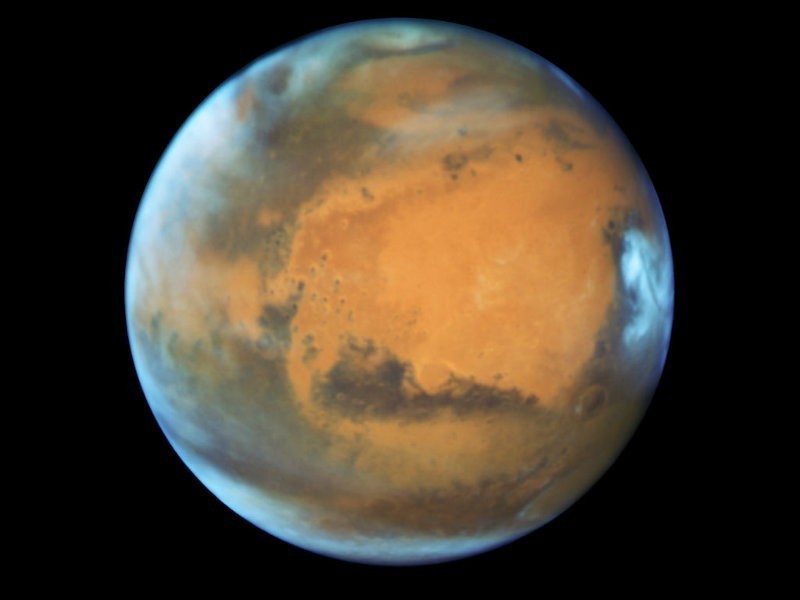Beyond Those Clouds: Mars Is The Brightest It's Been In A Decade
Mars will be closer to Earth Sunday night than it has been for more than a decade.
Reston, VA

- By Beth Dalby
Mars will be closer to Earth on Sunday than it has been for more than a decade. If only we weren't under cloudy skies.
It’s true that Mercury has greater swings in brilliance than any of the other planets in the solar system and Jupiter is currently the brightest starlike object in the evening sky, but Mars steals the show on Sunday when it and the Sun are on opposite sides of the Earth. That's what's called the Mars opposition.
The Mars opposition occurs about once every two years. In 2016, the planets are closer than they have been in a decade, however, according to Earthsky.org.
Mars will have quadrupled in brilliance since the beginning of April, and at its brightest, Mars shines 80 times more brilliantly than at its dimmest.
"To track down the warrior planet for yourself, go outside after dusk on any clear night and look for a glowing gold-orange beacon rising above the eastern horizon," writes Andrew Fazekas at National Geographic. "Mars will glide high over the southern sky throughout the night, setting in the west by dawn."
After opposition, Mars will begin decreasing in brightness,fading by November, according to Earthsky.org.
“From our perspective on our spinning world, Mars rises in the east just as the sun sets in the west,” NASA explained on its website. “Then, after staying up in the sky the entire night, Mars sets in the west just as the sun rises in the east. Since Mars and the sun appear on opposite sides of the sky, we say that Mars is in ‘opposition.’
“If Earth and Mars followed perfectly circular orbits, opposition would be as close as the two planets could get. Of course, nothing about motion in space is quite that simple! Our orbits are actually elliptical (oval-shaped), and we travel a little closer to the sun at one end of our orbits than at the other end.”
Mars has been shining brightly all month and will appear brighter than any star or planet in the sky the next couple of months.
Look Ahead to Meteor Showers
You’ll have to wait a couple of months to see meteor showers.
The Delta Aquarids peak in late July, with up to 20 meteors per hour. There’s no definite peak time for the Delta Aquarids, and the medium-speed meteors go on fairly steadily through late July and early August.
If you can catch only one meteor shower in 2016 make it the Perseids, which peak Aug. 11-12. They often produce 50 to 100 fast, bright meteors per hour during the peak and are known for persistent trails.
Image credit: Close-up view of Mars by Hubble Space Telescope via NASA
No comments:
Post a Comment